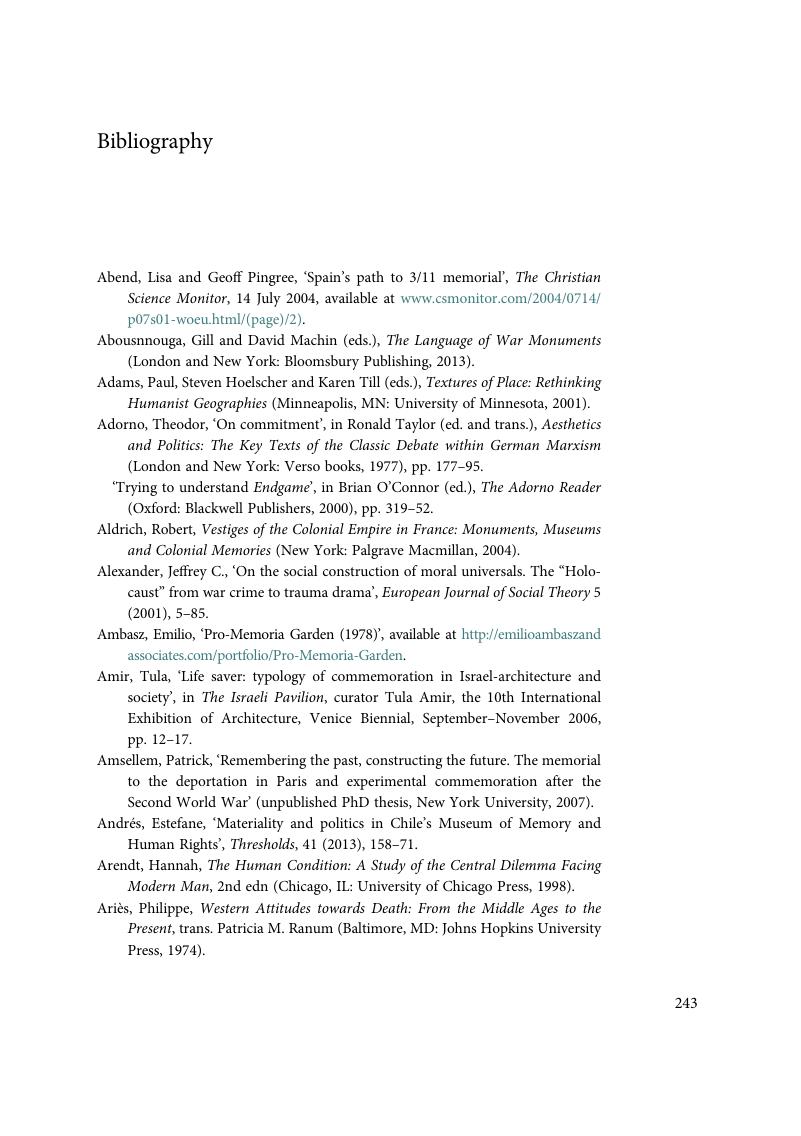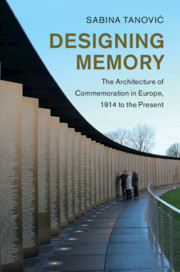Bibliography
Published online by Cambridge University Press: 08 November 2019
Summary

- Type
- Chapter
- Information
- Designing MemoryThe Architecture of Commemoration in Europe, 1914 to the Present, pp. 243 - 264Publisher: Cambridge University PressPrint publication year: 2019



